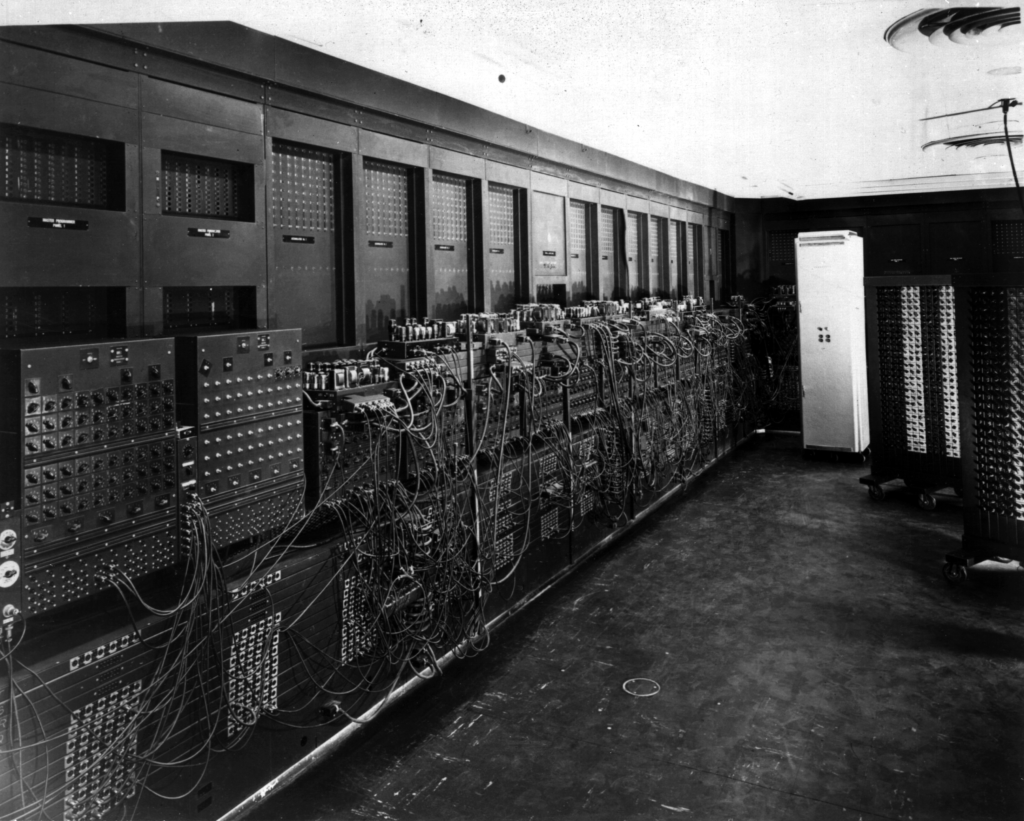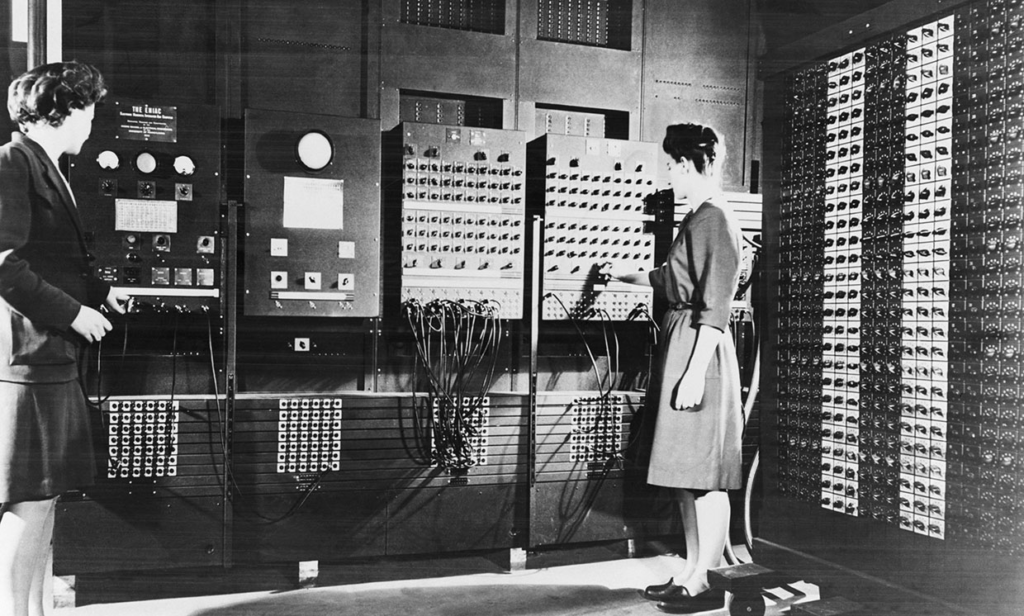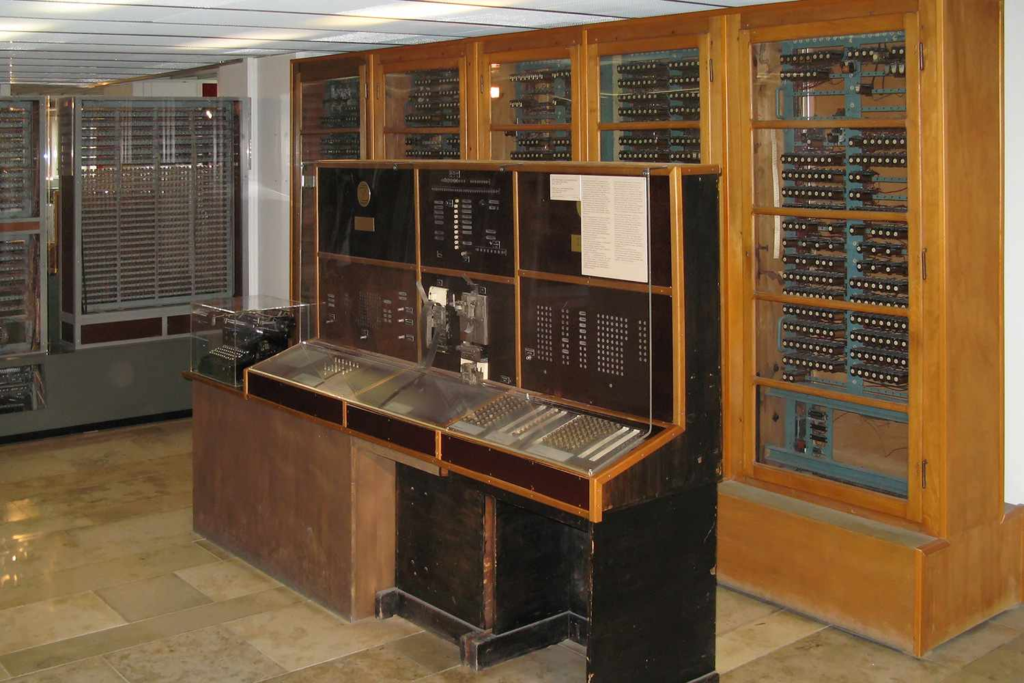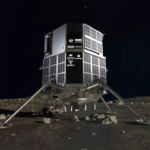
Introduction
Computers today are sleek, compact, and powerful. However, the first computer was nothing like the lightweight laptops or smartphones we use. The Electronic Numerical Integrator and Computer (ENIAC), built in the 1940s, was a giant machine that marked the beginning of modern computing.

What Was ENIAC?
ENIAC, the first general-purpose electronic digital computer, was developed during World War II to assist with military calculations, particularly for artillery firing tables. It was designed by John Presper Eckert and John Mauchly at the University of Pennsylvania and completed in 1945.
Size and Specifications
ENIAC was enormous compared to today’s standards:
- Weight: 30 tons
- Size: 1,800 square feet (about the size of a large room)
- Components: 17,468 vacuum tubes, 7,200 crystal diodes, 10,000 capacitors, and 5 million hand-soldered joints
- Power Consumption: 150 kilowatts (enough to dim lights in an entire neighborhood!)

How Did It Work?
Unlike modern computers, which store and execute programs digitally, ENIAC had to be physically rewired for each new calculation. It could perform 5,000 additions or 357 multiplications per second, which was groundbreaking at the time.
Impact on Technology
ENIAC was a major step toward modern computing. It demonstrated that machines could perform large-scale calculations much faster than humans. This led to the development of stored-program computers, where programs could be changed easily without rewiring the hardware.

Comparison to Modern Computers
| Feature | ENIAC | Modern Computer |
|---|---|---|
| Size | 1,800 sq. ft. | Fits in your pocket |
| Weight | 30 tons | A few grams (smartphones) |
| Speed | 5,000 operations/sec | Billions of operations/sec |
| Storage | No internal memory | Gigabytes to Terabytes |
Conclusion
ENIAC was the foundation of today’s digital age. Though it was massive and power-hungry, it paved the way for smaller, faster, and more efficient computers. Without ENIAC, the devices we use daily—smartphones, laptops, and even AI—might not exist.


